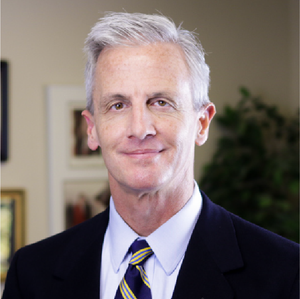Higher Education
Brandon Dutcher | February 14, 2014
Will Increased Government Spending on Higher Ed Boost Economic Growth?
Brandon Dutcher
You know the drill. Higher-education officials commission a study which discovers that “investment” in higher education has a tremendous multiplier effect, stimulating all sorts of economic activity. The twentysomething reporter who covers higher education for the local newspaper does the conventional stenography, and everyone goes home happy.
Higher-education officials in Oklahoma released just such an economic-impact report last year, and with the 2014 legislative session under way some of the report’s findings are again being discussed.
Fortunately, some reporters have the wisdom to consider not only that which is seen, but that which is unseen.
“Tenured professors and tax-financed researchers in higher education generally believe that public education spending is a ‘multiplier’—that is, that a dollar spent leads to much more than a dollar in economic activity,” Patrick McGuigan reported for Oklahoma Watchdog. “Not everyone agrees with that assumption.”
In fact, a top analyst of taxpayer spending on colleges and universities argues, “Government spending does not come out of thin air. Every dollar spent by state government comes out of the private sector at some point. A dollar of public spending is estimated to cost anywhere from $1.25 to $1.50 to raise.”
In short, Joshua Hall of the Center for College Affordability and Productivity (CCAP) challenges the accuracy of recent assertions that every dollar spent on public colleges in Oklahoma triggers nearly five dollars in economic activity.
Hall chided a State Chamber of Commerce study finding the public system of higher education is both a bargain and a wise use of taxpayer resources. The chamber analysis did not include a look at the number of sites in the system, administrative efficiencies, and other traditional concerns of critics.
Concerning that asserted “multiplier” effect of taxes spent on higher education, CCAP’s Hall told CapitolBeatOK, “Ignoring these costs … is a surefire way to inflate the benefits.” He says that after taking the costs of taxation into account, the net effect of taxes spent on Higher Ed is zero, “at best.”
Battelle Technology Partnership conducted the analysis for The State Chamber study, reaching several positive conclusions, including an estimated “return on investment” of $4.72 for every $1 of tax funding.
Battelle’s Martin Grueber said the projected $4.72 return on each dollar spent is “pretty strong” in comparison to other states. Asked if the study looked at the positive economic effect if some of that money were left in the private sector, Grueber told CapitolBeatOK: “We don’t look at that for the projects we do. We were trying to find the economic impact of those dollars spent in public institutions of higher education and play that out. We did not look at the fiscal stream, as such.”
One notable critic of Battelle-style analyses, Dr. Richard Vedder of Ohio University, told CapitolBeatOK, “Econometric analysis I have done suggests that the relationship between state appropriations for higher education and economic growth is actually negative—resources are taken from competitive private enterprise driven by market discipline and given to an inefficient sector sheltered from such discipline.”

Brandon Dutcher
Senior Vice President
Brandon Dutcher is OCPA’s senior vice president. Originally an OCPA board member, he joined the staff in 1995. Dutcher received his bachelor’s degree in political science from the University of Oklahoma. He received a master’s degree in journalism and a master’s degree in public policy from Regent University. Dutcher is listed in the Heritage Foundation Guide to Public Policy Experts, and is editor of the book Oklahoma Policy Blueprint, which was praised by Nobel Prize-winning economist Milton Friedman as “thorough, well-informed, and highly sophisticated.” His award-winning articles have appeared in Investor’s Business Daily, WORLD magazine, Forbes.com, Mises.org, The Oklahoman, the Tulsa World, and 200 newspapers throughout Oklahoma and the U.S. He and his wife, Susie, have six children and live in Edmond.